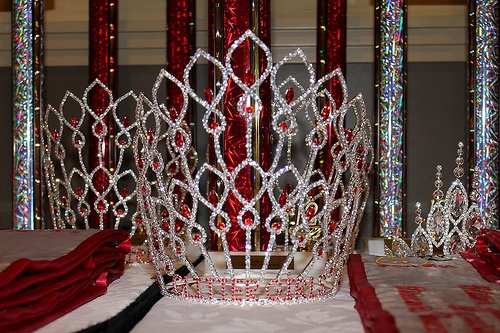
In the wake of the Council on Foundation’s modification of its original plan to host a “pitch competition” at its annual meeting this year, two people associated with the Case Foundation wrote a blog post on the foundation’s website to defend the notion of nonprofits “playing by market-based approaches” or rules—as though they don’t all the time because of the structure of the U.S. economy. Trying to make their point that the criticism of the COF competition was a nonprofit reaction against the wisdom of “markets…[that] have this uncanny way of being candid, sending demand signals that companies need to pay attention and adapt to in order to thrive, if not survive,” the two authors stretched some points that were made in the criticism of the COF program.
Sign up for our free newsletters
Subscribe to NPQ's newsletters to have our top stories delivered directly to your inbox.
By signing up, you agree to our privacy policy and terms of use, and to receive messages from NPQ and our partners.
- They characterized the criticism as a “feeding frenzy of articles” and cite all of two—because that’s all there were. That’s a pretty pathetic definition of “frenzy.” Do two articles, one from the Nonprofit Quarterly online, the other in the Chronicle of Philanthropy, constitute enough to make people “frenzied” (synonyms on Thesaurus.com including “delirious,” “feverish,” “hysterical,” “frenetic,” “frantic”) at the Case Foundation? Was the Council on Foundations scared off? Was it as discombobulated by the two articles (described by the two as “severe”) as the Case authors suggested? It seems to us that the Council’s decision to change the structure of the program from the contest to a discussion of contest approaches was based on give-and-take among the sponsors of the idea itself, taking into consideration the issues raised in the two articles, and deciding that a contest was not the right approach to take for a search for solutions to economic revival. Our guess is that the Council on Foundations has a little more mettle to it than to simply collapse in fear because of two articles.
- It’s not clear to us that the COF contest was simply meant, as the Case co-authors suggested, “to identify new organizations and approaches to drive social change.” Nice, but that’s an oversimplified view of what the Council called for. Its contest was looking for ideas on economic development, on building economies at the local or national levels, not the more amorphous notion of “driving social change.” Nor was it necessarily looking for “new” organizations. In fact, “new” may not have been the operative thinking behind the foundations that had generated the idea. Based on their track records in this field, they assuredly know (or ought to have known) that “new” isn’t always the necessary elixir for economic development. In fact, the constant search for “new” is what’s weakening public policy development. Hopefully, foundations are trying to counter the dissolution of policy making in the public sector. What used to be government programs and policies implemented for the long run have been increasingly abandoned in favor of cyclical “demonstration programs,” in which nonprofits lobby to get their programs adopted and funded as five-year, three-year, or two-year demonstration programs, only to have to lobby for new demonstration programs after the conclusion of the old ones. Philanthropy, one would hope, would be more deliberative about topics such as economic development that need not eschew the old in favor of new shiny pennies.
- Third, the two Case Foundation authors, defending the Council from what they described as criticism that “trashed” the venerable trade association, explained the value of pitch competitions with the success of competitions in “discover[ing] breakthrough innovations.” Many of the examples they referenced are technological or scientific, such as the Ebola Protective Suit that emerged from USAID’s Global Development Lab. Many (actually, nearly all) of the examples the two authors cited from a report from the program Case co-hosted with the White House in 2010 were matters of science and technology—the Ansari X Prize, new locations of gold deposits (the GoldCorp challenge and others)—and, by their own report’s definition, addressing problems that were “clear and well defined with clear, measurable and objective rules.” They seem to have been particularly taken with the “contest” in which a wedding dress designer was credited as having coming up with a solution to the need for a better protective suit for workers treating Ebola patients, but that isn’t quite all of the story. The wedding dress designer appears to have been one of several dozen people convened by Johns Hopkins University to generate ideas for a new Ebola suit, and when JHU won the prize (from USAID), she was used as the face of the effort for PR effect, as is all but obvious in the Washington Post’s coverage and the press release issued by Johns Hopkins, which credited “medical experts, engineers, students, and other volunteers” as making up the prize-winning team.
- It may be the view of the Case Foundation that when it comes to economic development, the solutions are there for the taking but for the identification of the innovators incentivized to uncover them, like the geologists in the Goldcorp challenge looking for new veins of the precious metal. The Case authors conflate scientific and technological innovations, like the search for new vaccines, with social innovations, falling prey to Donald Campbell’s law that questions whether the measurement of solutions to social issues can be as clean, simplified, and unbiased as the comparison of different scientific technologies. Campbell’s Law, for those who are prone to look at social phenomena as though they are a disease to be treated with a new vaccine, is as follows: “The more any quantitative social indicator (or even some qualitative indicator) is used for social decision-making, the more subject it will be to corruption pressures and the more apt it will be to distort and corrupt the social processes it is intended to monitor.” The purportedly frenzied critique simply suggested that the application of a contest for the best idea for economic development reduced economic development to a narrow, definable analytical frame more suitable for a selecting the technological innovation. The criteria for technical and scientific innovations are themselves hardly simple, but not really as complex, multifaceted, and value-laden as the measurement of innovations in jumpstarting depressed economies. Those of us who have tried to jumpstart economies in Detroit or elsewhere know that the task is rarely if ever reducible to a measurable, innovative gimmick. Moreover, in the social sciences, there is much knowledge about “what works” in terms of programs, not gimmicks, worth trying and, to use a favorite Case Foundation word, worth “scaling.” (Consider Campbell’s discussion of “proud programs” worth evaluating and emulating; see his Methodology and Epistemology for Social Sciences: Selected Papers, in Chapter 11, “The Experimenting Society,” or Lisbeth Schorr’s Within Our Reach, demonstrating much of the knowledge that exists about “what works” to reduce many social problems, or the detailed suggestions in Fighting Poverty: What Works and What Doesn’t, edited by Sheldon Danziger, et al.) Why aren’t these and other ideas simply put into practice? Because while there is a great deal of knowledge about programs that work, there is little consensus about what works to develop the political will to bring these ideas to fruition.
- The two Case authors suggested that the contest on economic revitalization is a kind of strategy for “democratizing philanthropy,” presumably based on the notion that this market-based strategy leads to democratization. For reasons that the two contest-critical articles noted, a pitch to the audience at the Council on Foundations isn’t quite the same as democratized philanthropy. It requires little imagination to understand that point, given the demographic makeup of COF annual meeting attendees, so we won’t belabor it. The Case authors’ premise is that the contest would have been a market-based approach to sorting out competing ideas—and that the market is somehow a democratizing agent. It is revealing that the challenge the Case authors construed in the frenzy of two whole articles might be skepticism not just about the structure of a contest to pick solutions to social problems, but doubts about market-oriented solutions. If that is the plane on which the Case Foundation wants to defend contests for picking the best solutions for economic development challenges, it is one that will attract some response. For example, many of the distressed local economies that the foundations are trying to revive have fallen apart because of the actions of market actors (think of the roles of banks and corporations disinvesting in Detroit, for example) or because of the unwillingness of market-driven businesses to ante up more than a pittance of tax revenues toward economic solutions (think of private sector responses to strategies that require substantially more in tax revenue-capitalized public subsidies than the corporate sector wants to pay for). As Jean Case said at a recent conference on the “fourth sector,” “We are big believers in the power of business and the power of entrepreneurs to change the world.” She added that for “too long, business has been on the sidelines of addressing problems,” and it was now “time to bring them in and give them a seat at the table.” It is a self-reinforcing belief, somewhat at odds with reality, that the market, if left to work or incentivized to work, will find solutions that work for everyone—and that inserting some market-sounding mechanisms into philanthropy will make philanthropy more effective (by picking the best economic development solutions like they were picking the most technically superior vaccines) and more democratic.
- Finally, let’s acknowledge the problem of language. Sometimes, the search for pitch contests for innovation, itself a murky term, is aligned with vigorous language that sounds a lot like the PR-crafted language of “pitchmen.” In the brief Case blog, in addition to “frenzy” and “trashing,” we find the Case staff touting their own self-congratulating vision of “revolutionizing philanthropy,” that the process of mobilizing private capital for public good needs a “reboot,” that the (philanthropic?) sector needs to be more “catalytic,” that they are searching for “breakthrough” solutions, that their approach is “fearless” and “fresh” and able to “disrupt the status quo” and “solve big, hairy problems.” In the muscular language and rhetoric employed by the authors to promote contests that address social phenomena such as economic development, it might be important to be a bit more sober about both the problems and the solutions. There is a lot of social entrepreneurialism in the Case people’s article, but as Parkinson and Howorth point out in “The Language of Social Entrepreneurs,” there are words and concepts in the semantics of social enterprise that might be questionable “conceptually, practically, and ideologically,” notably the belief in the efficacy of business or market solutions, priorities, and ethics.
In the end, the debate of what nonprofits can do in terms of jumpstarting economies comes down to how one sees the needs of the people most affected by economic privation, as exists in the neighborhoods of Detroit or small rural communities. Sometimes, listening to the voices of the people most affected is a necessary starting point for analysis and a better definition of democratization than simply expanding the number of philanthropists who might weigh in if they can afford to attend a Council on Foundations conference in downtown San Francisco.
This author has also been one of the many who have designed and implemented contests and competitions meant to address social phenomena (such as local economies) and, hopefully, learned. In one, for a program called the Neighborhood Preservation Support System, designed for the Commonwealth of Pennsylvania by a nonprofit think tank many years ago, this author toured the state describing the state’s plan to award substantial dollars for programs that constituted innovative approaches to neighborhood revitalization. One stop on the tour was Wilkes-Barre. As the author described the competition in the kind of exciting, muscular language that reflects the Case language, there was a stirring in the audience as people pondered what might be innovations for their neighborhoods. From the back of the hall, one person rose to say, “What would be really innovative would be making the programs that the state says it has for neighborhoods really work.” After that statement received pretty resounding support, another person rose to say, “In my town, what would be really innovative would be installing sidewalks and getting the streets repaired.” The conversation continued along the lines of getting the state officials in Pennsylvania to support what really worked—and to build the capacities and infrastructures of authentic community-based organizations to implement those programs over the long haul. In the Wilkes-Barre hall, that was the consensus about a winning innovation in the Neighborhood Preservation Support System.
Without feeling like we succumbed to “frenzy” or “trashing,” the state and its nonprofit think tank partner changed the NPSS effort to select five community collaborations that could benefit from capacity-building resources and a pledge to help their programs, ideas they had long had and wanted to try for a long time, finally get implemented. Having listened to the attendees in Wilkes-Barre and elsewhere in the state where we presented the outlines of the program, we also realized the need to do more than nod. Democratization meant listening to the people most affected by the conditions that the state was trying to ameliorate and then making the necessary changes, even if mid-course, to make things work better.










